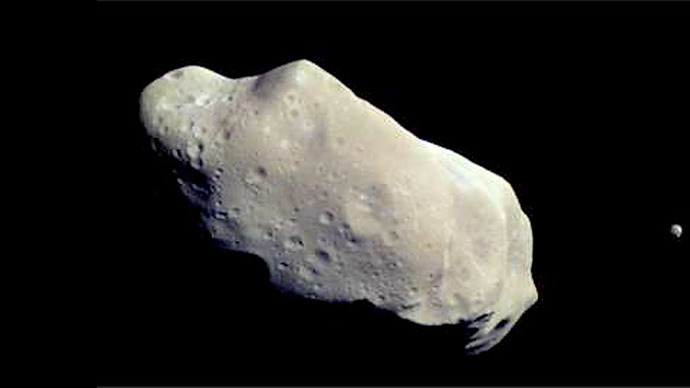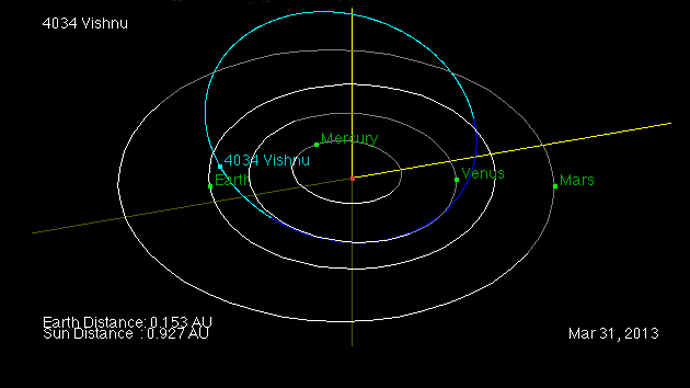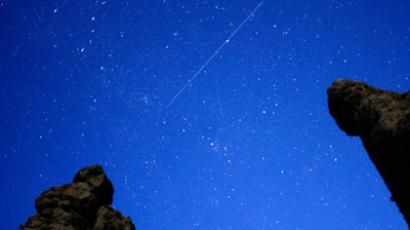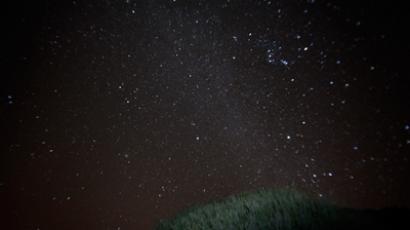April Fools’ fly-by: Four asteroids flash past Earth in one day

Earth is experiencing an unusual cosmic bombardment as four large asteroids pass it in just one day. Fortunately astronomers don’t seem to joking when saying none are expected to pose danger.
The largest is 4034 Vishnu, which is 800 meters across – the length of the Burj Khalifa in Dubai – though much greater in mass. In comparison, the Tunguska meteorite that devastated hundreds of miles of Siberian wilderness when it landed in 1908 was estimated to be no bigger than 100 meters. The asteroid that may have led to the extinction of dinosaurs 65 million years ago may have been up to 10 kilometers across.
But 4034 Vushnu – which was discovered in 1986 – will pass nearly 23 million kilometers from the Earth’s surface. The closest of the four, EN 89, will be just over 5 million kilometers away from the planet. The asteroid was only discovered a fortnight ago.

Although in everyday terms, the asteroids, ancient cosmic bodies that did not form into planets, will be a distance away, they are still classed as Close Approaches by astronomers. In total several hundred of them happen each year, but it is unusual for so many passes to happen over the course of one day.
The closest large asteroid to pass Earth this year was the 50-meter DA14, which flew 27,600 kilometers from the surface in February. Remarkably on the same day, an asteroid of up to 20-meters penetrated the atmosphere and exploded over Chelyabinsk in the Urals.
On average, asteroids of that size enter the atmosphere every 10 years. Those such as the Yucatan meteor that may have ended the Mesozoic Era, are expected to impact the Earth once every 20 million years.
While, the paths of many asteroids can be charted centuries ahead (and could even be destroyed if they head for the Earth) many, like the Chelyabinsk Meteor, are not detected until they enter the atmosphere – rendering the planet potentially vulnerable to impacts millions of times more powerful than the worst nuclear explosions.
But, some are taking a more positive attitude to asteroids. Earlier this year, Astrorank, a company that evaluates the make-up of asteroids in view of future space mining operations, said that 4034 Vishnu – which is composed largely of platinum and nickel-iron – is worth around $40 trillion dollars, more than half of the world’s gross national product last year.














